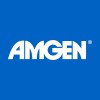
Rebeccamycin Analog in Treating Patients With Relapsed or Refractory Acute Myeloid Leukemia, Myelodysplastic...
Adult Acute Myeloid Leukemia With 11q23 (MLL) AbnormalitiesAdult Acute Myeloid Leukemia With Inv(16)(p13;q22)14 moreThis phase I trial is studying the side effects and best dose of rebeccamycin analog in treating patients with relapsed or refractory acute myeloid leukemia, myelodysplastic syndrome, acute lymphoblastic leukemia, or chronic myelogenous leukemia in blast phase. Drugs used in chemotherapy, such as rebeccamycin analog, work in different ways to stop cancer cells from dividing so they stop growing or die

A Study of Mircera in Anemic Patients With Chronic Kidney Disease Not Yet on Dialysis.
AnemiaThis study will evaluate the efficacy and safety of different subcutaneous starting doses and dosing frequencies of Mircera in anemic patients with chronic kidney disease not yet on dialysis. The anticipated time on study treatment is 3-12 months and the target sample size is <100 individuals.

NMA Allogeneic Hematopoietic Cell Transplant in Hematologic Cancer/Disorders
Chronic Myeloproliferative DisordersLeukemia6 moreRATIONALE: Giving low doses of chemotherapy before a donor peripheral blood stem cell transplant helps stop the growth of cancer cells. It also stops the patient's immune system from rejecting the donor's stem cells. The donated stem cells may replace the patient's immune system and help destroy any remaining cancer cells (graft-versus-tumor effect). Giving an infusion of the donor's T cells (donor lymphocyte infusion) after the transplant may help increase this effect. Sometimes the transplanted cells from a donor can also make an immune response against the body's normal cells. Giving immunosuppressive therapy before or after the transplant may stop this from happening. PURPOSE: This phase II trial is studying how well chemotherapy followed by donor peripheral stem cell transplant works in treating patients with hematologic cancer or aplastic anemia.

SB-715992 in Treating Patients With Acute Leukemia, Chronic Myelogenous Leukemia, or Advanced Myelodysplastic...
Acute Undifferentiated LeukemiaAdult Acute Megakaryoblastic Leukemia (M7)25 morePhase I trial to study the effectiveness of SB-715992 in treating patients who have acute leukemia, chronic myelogenous leukemia, or advanced myelodysplastic syndromes. Drugs used in chemotherapy, such as SB-715992, work in different ways to stop cancer cells from dividing so they stop growing or die

A Study of Mircera for the Treatment of Anemia in Dialysis Patients
AnemiaThis study will assess the efficacy and safety of Mircera given intravenously in the treatment of renal anemia in chronic kidney disease patients on dialysis who are not currently receiving epoetin or any other erythropoietic substance. The anticipated time on study treatment is 1-2 years and the target sample size is 100-500 individuals.

A Study of Intravenous Mircera for the Treatment of Anemia in Dialysis Patients
AnemiaThis study will assess the efficacy and safety of intravenous Mircera, given as maintenance treatment for renal anemia in chronic kidney disease patients on dialysis who were previously receiving iv epoetin. The anticipated time on study treatment is 1-2 years and the target sample size is 100-500 individuals.

A Study of Darbepoetin Alfa for the Treatment of Anemia in Subjects With Non-Myeloid Malignancy...
AnemiaNon-Myeloid MalignanciesThe purpose of this study is to evaluate the efficacy of darbepoetin alfa as 500ug once every 3 weeks to show that the dose and schedule are not inferior to darbepoetin alfa administered as 2.25ug/kg once per week in the treatment of anemia in subjects with non-myeloid malignancies.

Study of Subcutaneously Administered Peginesatide in Anemic Cancer Patients Receiving Chemotherapy...
Chemotherapy Induced AnemiaCancerThe purpose of this study is to evaluate the safety, pharmacodynamics (PD), and pharmacokinetics (PK) of multiple subcutaneously administered injections of peginesatide in anemic cancer participants receiving chemotherapy.

Bone Marrow Cell Gene Transfer in Individuals With Fanconi Anemia
Fanconi AnemiaFanconi anemia (FA) is a disease that affects an individual's bone marrow. It is caused by a defective gene in the bone marrow cells that produce various types of blood cells. Individuals with FA may experience fatigue, bleeding, and increased infections. The purpose of this study is to evaluate the safety and effectiveness of a gene transfer procedure in generating new, healthy cells in individuals with FA.

Three Immunosuppressive Treatment Regimens for Severe Aplastic Anemia
ImmunosuppresionThrombocytopenia2 moreSevere aplastic anemia (SAA) is a life-threatening bone marrow failure disorder characterized by pancytopenia and a hypocellular bone marrow. Allogeneic bone marrow transplantation offers the opportunity for cure in 70% of patients, but most patients are not suitable candidates for hematopoietic stem cell transplantation (HSCT) due to advanced age or lack of a histocompatible donor. For these patients, comparable long term survival is attainable with immunosuppressive treatment with anti-thymocyte globulin (ATG) and cyclosporine (CsA). However, of those patients treated with horse ATG(h-ATG)/CsA, one quarter to one third will not respond, and about 50% of responders relapse. Auto-reactive T cells may be resistant to the effect of ATG/CsA (non-responders), while in others residual auto-reactive T cells expand post-treatment, leading to hematopoietic stem cell destruction and recurrent pancytopenia (relapse). As long term survival is correlated to response rates and robustness of hematopoietic recovery, novel immunosuppressive regimens that can achieve hematologic response and decrease relapse rates are needed. This trial will compare the effectiveness of three immunosuppressive regimens as first line therapies in patients with SAA with early hematologic response as the primary endpoint, as well as assess the role of extended CsA treatment after h-ATG in reducing numbers of late events of relapse and clonal evolution. Randomization is employed to obtain an equal distribution of subject to each arm; comparisons of early hematologic responses will be made among the rates observed among the three concurrent arms (rabbit-ATG [r-ATG] versus standard h-ATG; alemtuzumab vs standard h-ATG). For long course CSA, comparison of primary end points will be to well established historic relapse rate of 38% at 2-3 years and a cumulative rate of clonal evolution of 15%.
